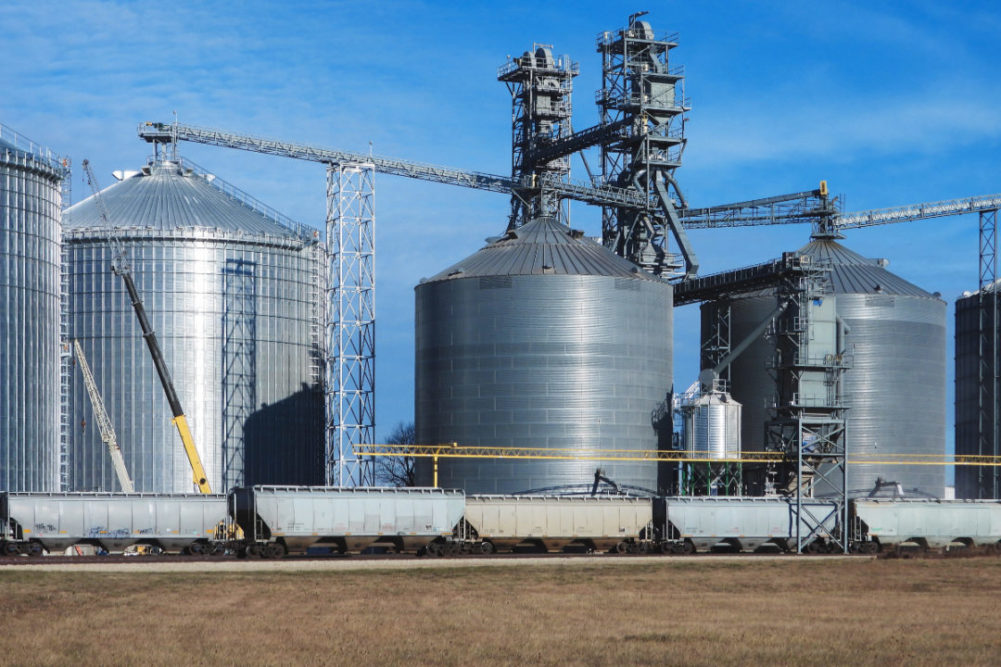KANSAS CITY — Transportation of grain was relatively trouble-free last week, millers and traders said, although some railroads remained about a week behind in placing empty cars at origins.
The Union Pacific railroad suspended single car voucher offers early in March in order to catch up in car placement that at times stretched to several weeks behind. The railroad last week told grain companies the railroad was assessing supply and demand for equipment and would likely begin offering single cars again in April.
Growers in North Dakota were limited in their hauling routes as parts of the state instituted annual spring road restrictions intended to prevent road damage as the ground thaws. Such temporary closures were expected to expand this week.
However, a relatively dry winter and limited snow cover could shorten the restriction period to a few weeks, an Upper Midwest durum miller said.
Rail activity
Total US rail traffic in the week ended March 6, the latest for which data was available, was 515,135 carloads and intermodal units, up 11% compared with the same week in 2020, according to the American Association of Railroads in their Weekly Railroad Traffic report.
Tallied separately, US carloads in the latest week totaled 232,494, up 1% from the same week in 2020, and US intermodal volume, which totaled 282,641 containers and trailers, were up 22% compared with 2020.
Grain was one of five US carload commodity groups to post a year-over-year increase for the week. Grain carloads in the week totaled 26,451, up 5,657 carloads, or 27%, from the same week a year ago. That brought cumulative 2021 grain carloads to 227,655 for an average of 25,295 per week, a 28% increase from the same period in 2020.
On Canadian rails in the latest week, total carloads were down 3% (down 1% year-to-date) and intermodal units were up 19% (up 13% year to date). Combined total Canadian rail traffic was up 7% for the week (up 5% thus far in 2021.) Canadian grain carloads totaled 10,699, up 51% from the same week in 2020, bringing the cumulative 2021 total to 86,437 for an average of 9,604 carloads per week, a 40% increase from the weekly average during the same period in 2020. Grain was the sole commodity group to show a year-over-year increase on Canadian rails.
On Mexican rails in the latest week, total carloads were down 6% year over year, total intermodal units were down 9%, and combined rail traffic was down 7%. Grain carloads totaled 2,155, a 14% increase over the same week in 2020, bringing the commodity 2021 cumulative total to 18,947 for a weekly average of 2,105, a 2% decline from the same period in 2020. Grain was one of four carload commodity groups to post an increase on Mexican rails. The top year-over-year gainer was coal at 81 carloads, a 523% increase.
For the three countries combined, North American rail traffic was up 9% for the week, 2% cumulatively. However, the increases were the result of increased intermodal units, as carloads separately were down fractionally for the week, and down 4% for the year.
Barge activity
US barge grain movements in the week ended March 6 totaled 848,441 tons, a 93% increase over the previous week and a 108% increase compared with the same period in 2020, according to the US Army Corps of Engineers.
In the same week, 525 grain barges moved down river, an increase of 258 barges from the previous week, according to the Corps and USDA’s Agricultural Marketing Service. There were 857 grain barges unloaded in New Orleans, a 10% increase from the previous week.
Ocean freight
Agricultural Marketing Service reported 36 oceangoing grain vessels were loaded in the Gulf in the week ended March 4, a 24% increase from the same week last year. In the 10 days starting March 5, 53 vessels were expected to be loaded, a 29% increase year over year.
The rate for shipping a tonne of grain from the US Gulf to Japan was $57.50 on March 4, unchanged from the previous week. The rate from the Pacific Northwest to Japan was $32.25 per tonne, unchanged from the previous week.
Trucking costs
The average on-highway diesel fuel price on March 15 was $3.191 per gallon, up 4.8¢ a gallon from the previous week and up 45.8¢ a gallon from a year earlier.
By region, the highest price on March 15 was California at $3.951 per gallon, up 5.4¢ from the previous week, up 32.6¢ from a year earlier.
The least expensive average by region was the Gulf Coast at $2.988 per gallon, up 5.9¢ from the previous week, up 48.4¢ from a year earlier.






